Tomatoes ripen in the summer sun along with a host of perennials. (Photo: Nicolas Loran/iStock.com)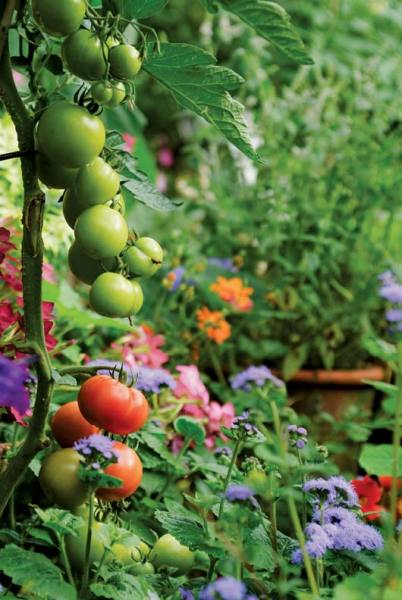
By Michael Weishan
I was at the florist a month or so ago, buying an arrangement of flowers for a small dinner party I was planning. Nothing fancy: just some tulips, a bit of greenery, and some pussy willows for structure. I picked up the bouquet, handed it to the clerk, and was entirely shocked when she said to me, “That will be $16.82, sir.”
$16.82? For that?
To be sure, if I had gone to the florist more often, I wouldn’t have been so surprised. But the fact of the matter is that I grow most of the flowers I use in the house, and it’s only in the dead of winter that I have to resort to retail purchases.
My secret? An annual cutting garden, of course, but not the kind you might be thinking. When most people hear the phrase “cutting garden,” they immediately have a PBS moment, envisioning some ornate brick-walled garden, dedicated entirely to flowers, with a lovely young lady, trailing white muslin, delicate cutting blossoms, floral shears, and wicker basket readily at hand. Well, that’s all fine and dandy for TV, but the rest of us need to be more practical, and few people have the space, let alone the budget, to dedicate a specific area of their landscape to flower harvesting. But that doesn’t mean you can’t grow your own flowers for the table.
In my yard, the cutting garden isn’t a separate entity at all, but instead lies tucked neatly within my vegetable garden, providing a host of lovely blossoms throughout three seasons of the year, and requiring no more work than growing those few tomatoes or beets that might otherwise take their place.
Planting lettuce along with a cutting garden is a great way to save space in your landscape. (Photo: April M. Taublee/iStock.com)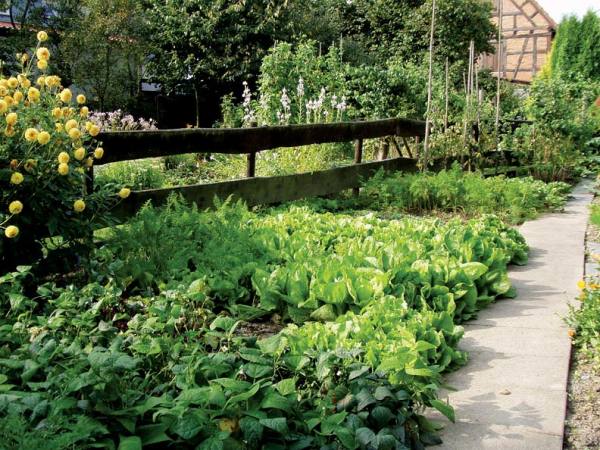
Layout
If you think about it, locating flowers with your vegetables makes a lot of sense, for several reasons. The first is layout. Like its close cousin the vegetable garden, a cutting garden should be a utilitarian space, designed primarily for usefulness and secondarily for beauty. (Cutting gardens can be quite beautiful, but that’s not the goal.) This is an important point, and probably the most common reason why many people decide that growing flowers for indoor harvest is just too much work—they mistakenly think that a cutting garden must be both ornamental border and flower larder.
A large watermelon sits side by side with colorful marigolds for the ultimate late summer garden. (Photo: Willowpix/iStock.com)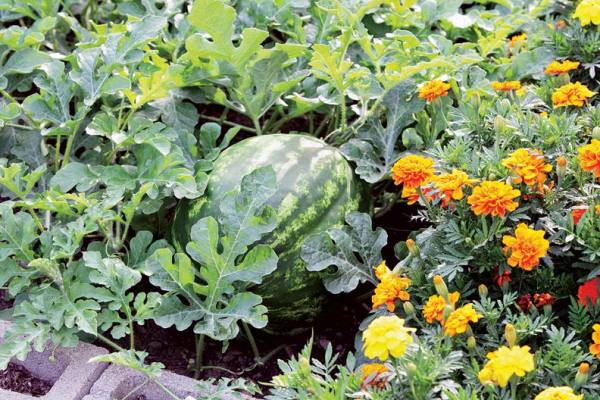
In reality, the demands of keeping a cutting garden looking perfect and producing flowers throughout the season are too much for all but the most experienced horticulturist and shouldn’t even be attempted by beginners. How much easier it is to simply locate your flower and vegetable needs in the same space, in easily workable beds not more than four feet or so across, with access from both sides to facilitate cutting. Nor should you worry too much about arrangement, at least in the artistic sense. Plants should be placed where they’ll grow best (so as not to shade out their shorter neighbors, for instance) and where they are easiest to cut, not for how they look together in the garden. There will be plenty of time to worry about aesthetic considerations when the flowers arrive in the vase.
Soil
The second reason to locate your vegetables and flowers together is the remarkable similarity of vegetable and cut flower culture. Take soil, for instance: Gardens for cutting, like those for growing vegetables, need the best possible soil you can manage. As hungry annuals, both vegetables and flowers severely deplete the soil to produce a bountiful harvest. Make sure your site has full sun (that means 8 hours of direct light a day and not a moment less), and work an inch or two of compost and/or rotted manure into your soil before you plant each spring, adding at the same time both a quick-release and a slow-release fertilizer to insure constant feeding throughout the season. (Quick- and slow-release fertilizers are available in many forms, both organic and inorganic, and are found in most every nursery or garden center. If you are confused about which is which, be sure to ask, as the jump start from quick-release and the continued feeding from slow-release are crucial for continuity of bloom.)
To maintain your mixed garden, harvest both your flowers and your vegetables. (Photo: Lee Torrens/iStock.com)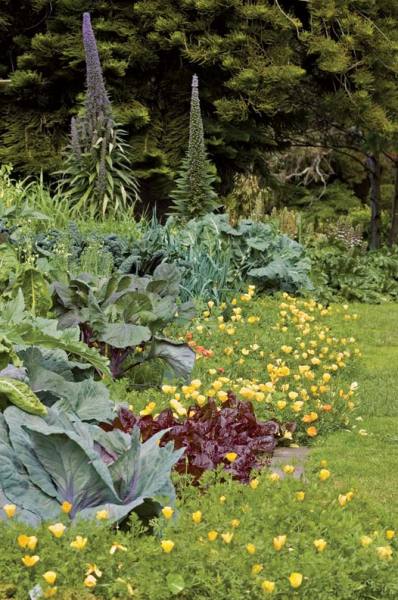
Maintenance
Needless to say, proper maintenance is also a must. Your flower bed will require at least an inch of water of week in the absence of rain, and a heavy coating of mulch is required if you don’t wish to pay for every blossom you cut with rivers of sweat produced by endless weeding. Also, don’t forget that cutting gardens, just like vegetable gardens, must be harvested. Many varieties will cease flowering if allowed to go to seed. Fortunately, these minor chores become ever so much easier when they are subsumed into the general labor of the vegetable patch, which, if you’re any kind of gardener (or connoisseur of fresh vegetables), you’ll be wont to visit daily during the harvest season, in any case.
Keep in mind that not all flowers for cutting are annuals grown especially for the vase. If you plant prodigious numbers of spring bulbs about the yard (as well you should), no one is going to miss a few dozen blossoms collected for the front hall. Similarly, perennial plantings can be harvested—judiciously —for indoor use. My particular favorites for this delightful bit of pilferage are peonies and German bearded iris, and then, just behind these in early summer, oriental lilies. I grow all three in larger numbers than I ordinarily would, with the specific plan of selectively cutting, say, a third of the blossoms for indoor use throughout their extended blooming season.
Large cabbage leaves mix with delicate flowers in this garden bed. (Photo: Wendy Townrow/iStock.com)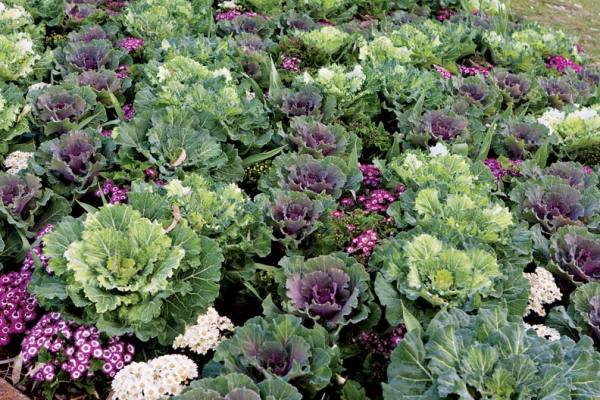
Shrubs
Finally, don’t forget flowering shrubs. These woody plants make for spectacular arrangements when brought indoors, (especially when forced), and I make sure any landscape I design is dotted with ideal candidates for cutting: giant pussy willow, flowering quince, witch hazel, spirea, and a host of others. Most of these shrubs require a yearly pruning anyway to maintain top flowering form, so you might as well benefit from your labor by timing your cutting of these fragrant beauties to appreciate indoors.
So this spring, when you’re at the nursery eyeing those tomatoes and eggplants starters for your vegetable garden, wander over to the annual section and buy a half dozen packs of your favorite summer flowers, and tuck them amongst your veggies. Come summer, you, your garden, and your table will be glad you did.







